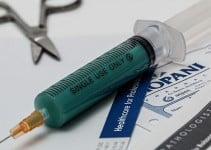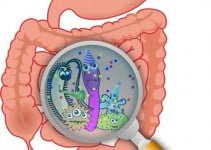Menstrual cycle reflects changes that occur in the endometrium – sheath that lines the uterus. Layers of the endometrium are stripped away at the end of the cycle and are part of the menstrual bleeding. The menstrual cycle is usually divided into phases: follicular (or proliferative) phase, ovulation and luteal (or secretory) phase.
The menstrual cycle consists of two simultaneous cycles; Ovarian and uterine cycle. The ovarian cycle consists of follicular, ovulatory, and luteal phase whereas uterine cycle consists of menstruation, proliferative phase, and secretory phase.
Follicular (proliferative) phase
Follicular phase includes menstrual bleeding, after which follows the proliferation (growth and thickening) of the endometrium. It usually lasts for 10-14 days. To understand this process it is important to realize how to count the number of days of the menstrual cycle.
The first day is usually the first day of bleeding. Bleeding lasts an average of 6 days. At that time, the concentration of estrogen and progesterone are the lowest. At the end of menstrual bleeding begins the proliferative phase when endometrium begins to grow and becomes thicker.
Concentrations of FSH increase and stimulate the maturation of several follicles over a period of two weeks, until eggs triples in size. During this period, FSH also stimulates the ovaries to produce estrogen, which stimulates a strong surge of LH around the 14th day.
Then the surge of LH triggers ovulation and the crumbling of the largest follicle and the egg goes into one of the two fallopian tubes.
Ovulation and secretory (Luteal) Phase
With ovulation (usually the 14th day of the 28-day cycle) proliferative phase stops and starts the secretory (Luteal) phase, which lasts around 14 days. This is commonly called the premenstrual period.
After ovulation, under the influence of LH-a burst follicle develops into corpus luteum, the yellow tissue that produces progesterone. The joint action of progesterone and estrogen stimulate the tissue in which the uterus is coated for the preparation of thick layers of blood vessels in which the fertilized egg can attach and develop.
If the egg is fertilized, it attaches to the uterine wall. Corpus luteum continues to produce progesterone and estrogen.
When there is no fertilization, corpus luteum fails to form, which is called the corpus albicans (Latin for “white body”), and concentration of estrogen and progesterone fall. At the end the layer of the endometrium is shed and lost with menstrual bleeding.
Use this Menstrual Cycle Calculator to calculate your next period




